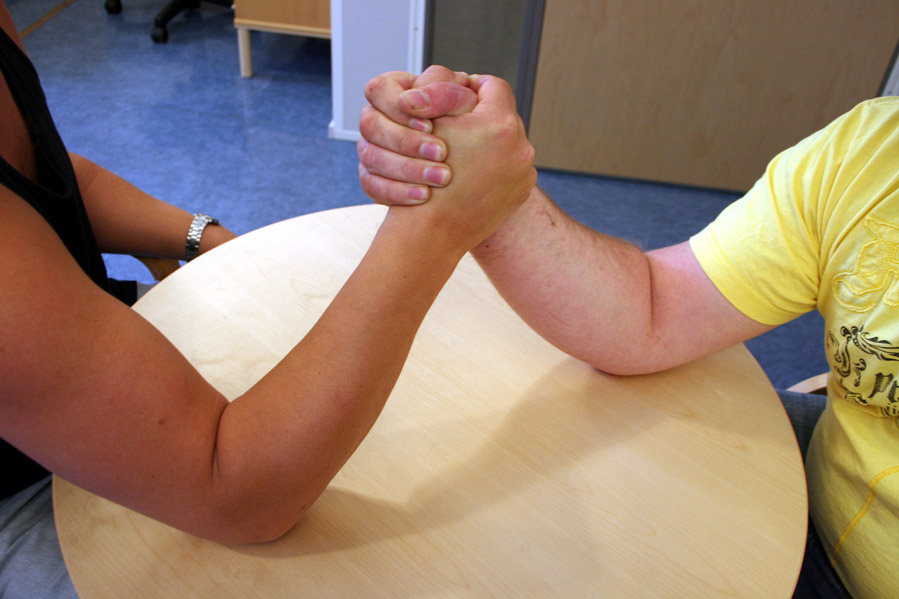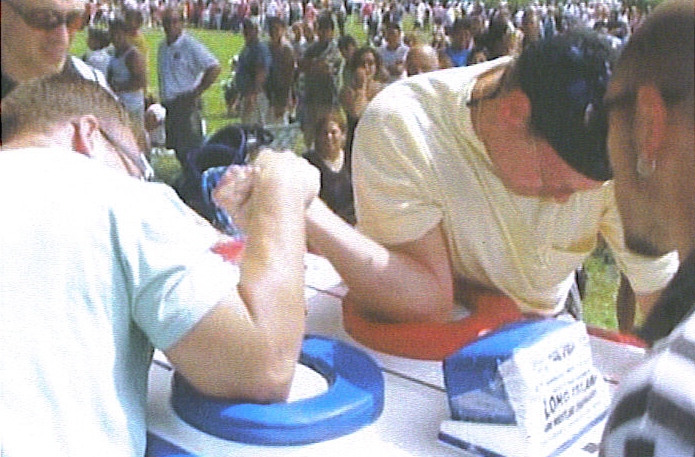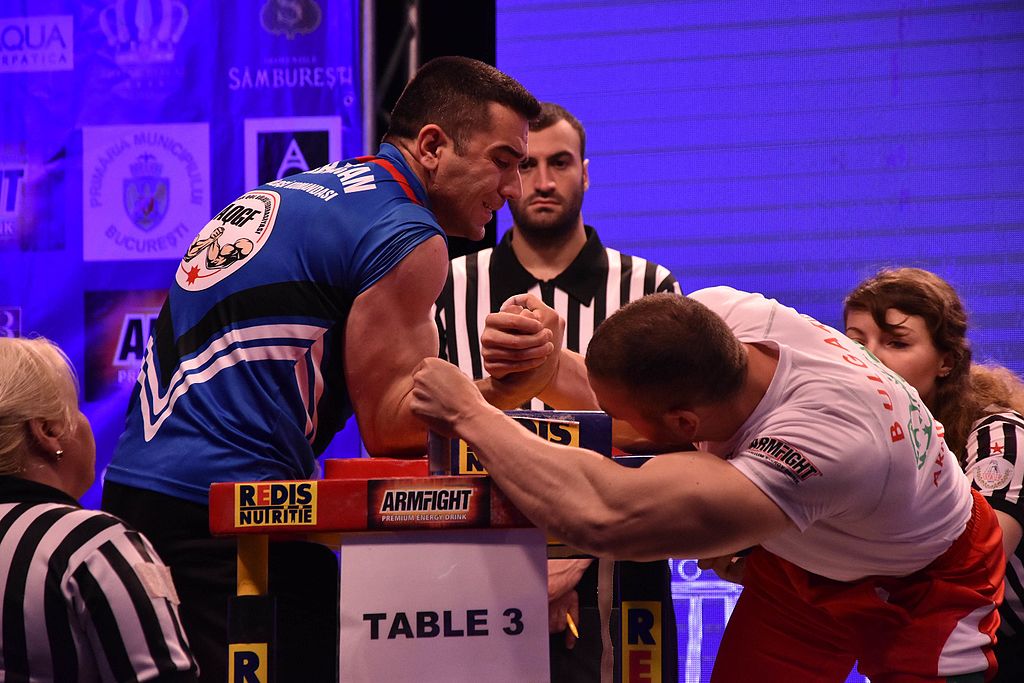Arm wrestling is a sport involving two participants. Each places one arm on a surface with their elbows bent and touching the surface, and they grip each other’s hand. The goal is to pin the other’s arm onto the surface, the winner’s arm over the loser’s arm. In the early year’s different names were interchangeably used to describe the same sport: “Skanderbeg”, “arm turning”, “arm twisting”, “arm wrestling”, “indian arm wrestling”, “twisting wrists”, “wrist turning”, “wrist wrestling”. Organized arm wrestling tournaments started being held in the 1950s.
Arm Wrestling
History
Armwrestling can be traced all the way back to ancient Egypt where a painting depicting a type of arm wrestling was found in an Egyptian tomb dating to about 2,000 B.C.
The modern sport is based on a Native American game. In fact, it was usually called “Indian wrestling” when practiced by frontiersman during the 19th century and by children in the 20th century.
In addition to being a semi-popular sport among high school and college students, arm wrestling was a tavern sport and the first organized competition was staged by a journalist, Bill Soberanes, in 1952 at Gilardi’s Saloon in Petaluma, California.


Rules
- Each match is officiated by two referees, one on each side so the officials can see the competitors and their grip from both sides.
- There is no time limit to a match but a referee may call a halt to the match if one or both competitors are in his opinion not in a fit state to carry on.
- The competitors should approach the table, make themselves comfortable and then grip their opponent’s hand. The grip should be palm to palm with the thumb knuckle visible. The competitor’s other hands should grip their respective hand peg.
- Competitors can choose to start a match in the referee’s grip or in a strip but both competitors must agree to this.
- Once the referees are happy with the grip from both competitors, the contest will begin. Each competitor should attempt to pin their opponent’s arm onto the touch pad.
- Pressure should be in a sideways capacity to force their opponent’s hand to the touch pad. Back pressure in an attempt to drag the opponent off toward the center of the table is not allowed.
- The match is won when one competitor pins their opponent’s hand onto the touch pad. At this point, if the head referee is happy that it is a valid pin, they will shout ‘Stop!’ and indicate the inner by immediately raising their arm.
- A valid pin is when any part of the competitor’s natural wrist touches the touch pad.
- There are numerous fouls that can be committed in Arm Wrestling. These include touching a part of your own body during the match, crossing their shoulder into the opposition area, dropping the shoulder below the height of the touch pad, foul language, abuse or poor sportsmanship to name a few.
- Two warnings = one foul and two foul equals disqualification meaning that their opponent immediately wins the match.

Equipment
For official World Arm Wrestling Tournaments, the tables should have the following features and conform to the WAF rules. Tables essentially consist of:
- Elbow pads – These are where each competitor places their elbow down to wrestle. They are padded to avoid discomfort and to prevent injury.
- Touch pads – These are the raised pads are on opposite sides of the table that each respective competitor is trying to push his opponents hand onto.
- Hand pegs – These are used by competitors to grip onto whilst wrestling, thus giving themselves some added leverage.
- added leverage.
Associations
- International Federation of Arm Wrestlers(IFAW) – held arm-wrestling tournaments in conjunction with major International Federation of Body Builders (IFBB) bodybuilding contests, including early editions of the Mr. Olympia
- International Wrist wrestling Club(IWC)
- Professional Arm-wrestling League(PAL)
- Ultimate Arm-wrestling League(UAL)
- World Arm Wrestling Federation(WAWF)
- World Arm sport Federation
- World Arm-wrestling League(WAL)
- World Professional Arm-wrestling Association(WPAA)
- World Professional Wrist wrestling Association(WPWA)
- World’s Wrist wrestling Championship, Inc.(WWC) – first arm-wrestling organization, organized the first World’s Wrist wrestling Championship – it was held in Hermann Sons Hall: the second largest auditorium in Petaluma in 1962; later those (WWC’s) World championships were known as Petaluma World’s Wrist Wrestling Championship.
- Carling O’Keefe World Arm-wrestling Championship– Fred Salvador first organized in 1971 after Petaluma Worlds Wrist wrestling Championships; later referred to as the birth of organized arm-wrestling in Canada; also known as Timmins Worlds






